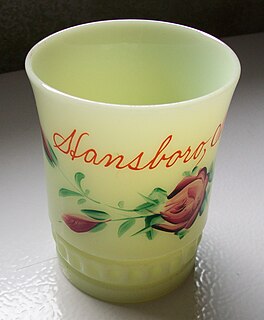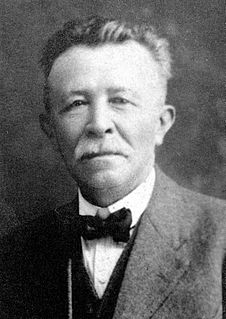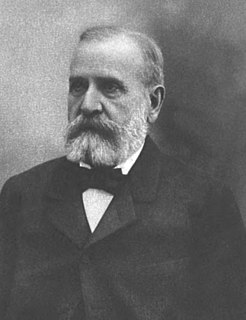
Tiffin is a city in and the county seat of Seneca County, Ohio, United States. Developed along the Sandusky River, which flows to Lake Erie, Tiffin is about 55 miles southeast of Toledo. The population was 17,963 at the 2010 census. The National Arbor Day Foundation has designated Tiffin as a Tree City USA.

The Battle of White Plains was a battle in the New York and New Jersey campaign of the American Revolutionary War, fought on October 28, 1776 near White Plains, New York. Following the retreat of George Washington's Continental Army northward from New York City, British General William Howe landed troops in Westchester County, intending to cut off Washington's escape route. Alerted to this move, Washington retreated farther, establishing a position in the village of White Plains but failed to establish firm control over local high ground. Howe's troops drove Washington's troops from a hill near the village; following this loss, Washington ordered the Americans to retreat farther north.

Depression glass is glassware made in the period 1929–1939, often clear or colored translucent machine-made glassware that was distributed free, or at low cost, in the United States and Canada around the time of the Great Depression. Depression glass is so called because collectors generally associate mass-produced glassware in pink, yellow, crystal, and green with the Great Depression in America.

Ball Corporation is an American company headquartered in Broomfield, Colorado. It is best known for its early production of glass jars, lids, and related products used for home canning. Since its founding in Buffalo, New York, in 1880, when it was known as the Wooden Jacket Can Company, the Ball company has expanded and diversified into other business ventures, including aerospace technology. It eventually became the world's largest manufacturer of recyclable metal beverage and food containers.

The A.H. Heisey Company was formed in Newark, Ohio, in 1895 by A.H. Heisey. The factory provided fine quality glass tableware and decorative glass figurines. Both pressed and blown glassware were made in a wide variety of patterns and colors. The company also made glass automobile headlights and Holophane Glassware lighting fixtures. The company was operated by Heisey and his sons until 1957, when the factory closed.
Augustus Henry Heisey was an American industrialist, soldier and glassmaker.
The Westmoreland Glass Company was a company that produced glass in Grapeville, Pennsylvania.
The Fostoria Glass Company was a manufacturer of pressed, blown and hand-molded glassware and tableware. It began operations in Fostoria, Ohio, on December 15, 1887, on land donated by the townspeople. The new company was formed by men from West Virginia who were experienced in the glassmaking business. They started their company in northwest Ohio to take advantage of newly discovered natural gas that was an ideal fuel for glassmaking. Numerous other businesses were also started in the area, and collectively they depleted the natural gas supply. Fuel shortages caused the company to move to Moundsville, West Virginia in 1891.

The Sneath Glass Company was an American manufacturer of glass and glassware. After a brief 1890s startup in Tiffin, Ohio, the Company moved to Hartford City, Indiana, to take advantage of the Indiana Gas Boom. The small city was enjoying the benefits of the boom, and could provide natural gas as an energy source for manufacturers. Sneath Glass was one of many glass manufacturers that moved to the region, and became Hartford City's second largest employer.
Belmont Glass Company, also known as the Belmont Glass Works, was one of Ohio's early glassmaking companies. It was named after Belmont County, Ohio, where the plant was located. The firm began operations in 1866 in a riverfront village along the east side of the county, which is known as Bellaire. At that time, the community had resource advantages that made it an attractive site for glassmaking. Bellaire's location at the intersection of the Ohio River, the National Road, and two railroads meant it had an excellent transportation infrastructure. Fuel necessary for the glassmaking process was also readily available, since Belmont County was part of the eastern Ohio coal region. Bellaire also had a workforce with glassmaking expertise located less than five miles away, since glass had been produced in Wheeling, West Virginia, since the 1820s.

Henry Crimmel was an American glassmaker who became well known in Ohio and Indiana. A German that came with his family to America at the age of eight years, the American Civil War veteran started at the lowest level in glass making, and learned every aspect of the business. A skilled glassblower known for his glassmaking expertise and the recipient of two patents, he also worked in management in at least three glass factories – and was one of the co-founders of the Novelty Glass Company and the reorganized version of Sneath Glass Company. He retired with over 50 years in the industry.
The United States Glass Company was a trust formed by the combination of numerous glass companies. The factories were located from western Pennsylvania to Indiana.

Elegant glass is high quality glassware created in the United States during the Depression Era. It was sold for high prices in department stores and given as wedding gifts. When new, Elegant glass would cost more than its oft-confused counterpart, Depression glass, because it was at least partially handmade, had a cleaner finish, and more vibrant colors. From the 1920s through the 1950s, Elegant glass was an alternative to fine china. Most of the Elegant glassware manufacturers closed by the end of the 1950s, and cheap glassware and imported china took its place.
Novelty Glass Company of Fostoria was one of over 70 glass manufacturing companies that operated in northwest Ohio during the region's brief Gas Boom in the late 19th century. The company made drinking glasses, bar goods, and novelties. Organization of the firm began late in 1890, with banker Rawson Crocker as president and veteran glass man Henry Crimmel as plant manager. Production started in February 1891. The plant was built on the site of the former Buttler Art Glass Company, which had been destroyed by fire in 1889.

Hartford City Glass Company was among the top three window glass manufacturers in the United States between 1890 and 1899, and continued to be one of the nation's largest after its acquisition. It was also the country's largest manufacturer of chipped glass, with capacity double that of its nearest competitor. The company's works was the first of eight glass plants that existed in Hartford City, Indiana during the Indiana Gas Boom. It became the city's largest manufacturer and employer, peaking with 600 employees.
Seneca Glass Company used to be the largest manufacturer of tumblers in the United States. The company was also known for its high-quality lead stemware, which was hand-made for nearly a century. Customers included Eleanor Roosevelt, Lyndon Johnson, the president of Liberia, the Ritz Carlton Hotel, Tiffany's, and Neiman-Marcus.
J. H. Hobbs, Brockunier and Company was one of the largest and best known manufacturers of glass in the United States in the 19th century. Its products were distributed world-wide. The company is responsible for one of the greatest innovations in American glassmaking—an improved formula for lime glass that enabled American glass makers to produce high-quality glass at a lower cost. The firm also developed many of the talented glassmakers that started glass factories in Ohio and Indiana.
Thomas Sweeny or Sweeney, was a prominent glass manufacturer in what became Wheeling, West Virginia during the American Civil War, who before that war served in both houses of the Virginia General Assembly and ran the North Wheeling Flint Glass Works. .

Samuel Baugher Sneath was an American businessman involved in banking, railroading, and manufacturing.” He was considered among the "founders, builders, and defenders" of the United States. Sneath and his wife Laura were also philanthropists, and the Samuel B. Sneath Memorial Publication Fund was established by Mrs. Sneath with a gift to the Divinity School of Yale University on October 19, 1922.












